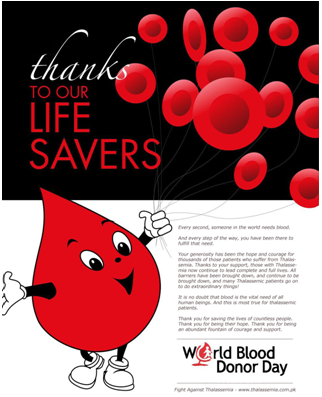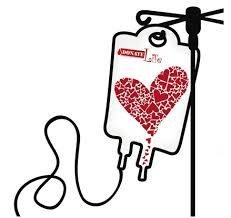Blood donation has been around for many years and has increased most recently. Many lives have been saved thanks to donors who have voluntarily provided blood when it was low in supply. An important aspect of blood donation is the knowledge that people have about the process and its reasons.
As a result, blood donation advertisements play an important role in getting people to donate blood. The blood donation advertisements have an overall positive effect on people, as they direct people to save the lives of others, as well as educate others on the useful health details and uses of blood.
The advertisements and campaigns for blood donations have been around for several decades. The significant amount of information that provides people with an idea and reasons for blood donations has played an important role in how people view donation and the out coming results (Johnson, 2010).
The major cause of the advertisements is to present a message that blood is always needed, as there is a significant deficit at times of medical emergencies. It is widely known that there are many accidents that take place every day which require donors to give blood, and sometimes, a form of reward for donating has yielded an increase in blood donors.
At the same time, there are some negative effects of the advertisements, as people might feel threatened in relation to their health and general well-being. Of course, the positive effects of advertisements have proven to be much higher than negative ones. This proves that the use of advertisements is much useful for people and health institutions. People become aware and better prepared to help fellow citizens.
The second cause is to educate people on the process and reassure them that it is completely safe. There are many individuals amongst any population who feel they might become infected or their health will significantly deteriorate after the donation (Hillyer, 2007). Even though complete information is not always provided in the advertisement, there are strict criteria that must be met prior to donating blood.
An individual is thoroughly tested before they can give blood, as any infectious disease can be easily transmitted to the person receiving blood (Hillyer, 2007). Also, a person giving blood might be susceptible to some risk, in cases where they have a health condition which can become worse by a lack of blood supply.
Another cause of the advertisement is to establish regular donors who will provide a certain amount of supply to the clinics and hospitals. This will create a base of people in the population who can constantly and reliably contribute to the cause. The dependence of hospitals on the public is seen specifically through people who are dedicated and can give guarantees about their return.
The promotion of the unpaid donors will make sure that the blood banks have proper supply in case a need arises. An important purpose of the recent blood donation advertisements has been the attraction of the younger population. Previously, not a lot of younger adults were donating blood. This was due to lack of knowledge and some negative effects of the advertisements.
Currently, there is much information provided and people have become widely aware of donations through printed material and advertisements that can be seen on television and the internet. The age of technology has widened the spread of advertisements, so people can get visual representations of the purpose and positive effects of donating blood (Hillyer, 2007).

Unfortunately, there are advertisements that have a negative effect on people.

As is evident from the above image, some people can become frightened by the process of donating blood. The graphic representations of medical equipment or needles might discourage some people to give blood, as there are cases when having your blood taken can be painful or cause some form of bruising (Handin, 2003).
Even though the greater population is prepared to feel some form of discomfort during donations, there are those who are predisposed to the fear of donating, especially through graphic representations of advertisements.
Blood donation advertisements and the donations itself not only affect attitudes and behaviors of people, but have a direct link to the economy of a country. One effect is rather positive, as the more blood people donate, the better services medical institutions will provide, which will increase the amount of patients and contributions to the economy.
Another positive effect of the cause is that the population will be healthier and people will be able to contribute to society and economy through participation in public matters (Handin, 2003).
This will lead to a more stable and reliable economy that will give back to society by having community programs and financial support of the country. A light negative effect can be observed, as the medical institutions have to use equipment that is sanitary and disposable. Each time a person is treated needles, gloves, syringes and other tools must be available.
The way people are affected by the blood donation advertisements and donation itself are one of the most important factors in the process. Primarily, people are provided with a reassurance that they can positively contribute to society and save people through relatively little effort from their side.
Both causes and effects of blood advertisement are respectful and honorable. People start realizing the value of their individuality and the important of public contributions. All someone has to do when donating blood is find some time to get to the hospital.
Once they get there, everything is done by professional nurses and doctors. A person simply gives away blood and does not need to commit a lot of time, work or risk own well-being. The advertisements and donations have a positive effect on the society and how people feel towards others and the greater community. It has an effect that unites individuals and allows for human compassion.
It also makes individuals acknowledge the importance of the cause and feel rewarded with the acknowledgement and contribution to society they have provided. People feel they have done something for the society and strength of others. Once a person realizes that they might have saved someone’s life, which is often the case, their own individuality strengthens, they start feeling better, kinder and more ready to help again.
Blood donation and its advertisements have had a positive effect on both individuals and society in the most selfless and benevolent ways. It has spread a widely accepted notion that people can directly affect the well-being of others, which has many beneficial outcomes for those who donate and people in dire need.
References
Handin, R. (2003). Blood: Principles and Practice of Hematology. Philadelphia, PA: Lippincott Williams & Wilkins.
Hillyer, C. (2007). Blood Banking and Transfusion Medicine: Basic Principles & Practice. Philadelphia, PA: Elsevier Health Sciences.
Johnson, E. (2010). Technology and Medical Practice: Blood, Guts and Machines. Burlington, VT: Ashgate Publishing, Ltd.
Social Awareness: Donate Blood [Image]. (2013). Web.
World Blood Donor Day [Image]. (2013). Web.